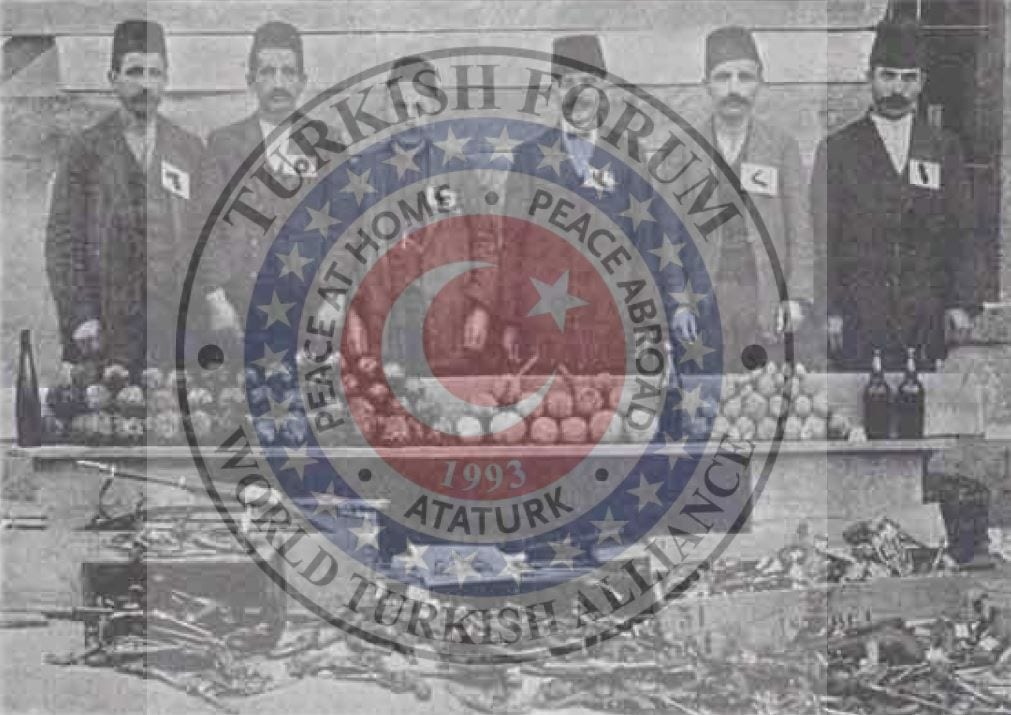
The members of Armenian terorist group along with the weapons and bomb found in their house in Adapazari in 1915.
While The Turks were fighting with the Russians, English and the French, what should have they done with these coldbloodedmurderers who backstabbed The Turks andmurdered women and children while men were away fighting in the battlefields?
Armenia and the Armenians: Origins of the terms Armenia and Armenian.
The earliest known history of the Armenians. The Armenian kingdom of
Cilicia.
The origins of the Armenian Question: The Armenian Church. The
activities of missionaries. The difference of religion. Propaganda.
The Armenians in the Ottoman Empire and the Policies of the Great
Powers: The Ottoman Empire until the imperial reform edict.The policies of
the great powers. From the reform edict to the Berlin Congress. The
population question. Armenian sources. Ottoman sources. Foreign Sources.
The province of Erzurum. The province of Van. The province of Bitlis. The
province of Diyarbekir. The province of Elaziz. The province of Sivas. The
1877-8 Russian war and the Berlin Congress. Total Armenian population.
The Armenian Question: First attempts at reform. The internationalization of
the subject of reform. Armenian preparation for revolt. Associations and
committees. The revolutionary Hunchak Party. The revolutionary Armenian
Federation (Dashnaksutyun). Terrorist activities, rebellions. The Arrest of the
defenders of the Motherland. The incident of Musa Bey. The shoot-out with
the Armenakan band members. The Erzurum incident. The demonstration of
Kumkapi (Kumkapu). Other incidents before the Sassun rebellion.The first
Sassun rebellion. The Babiali demonstration. Incidents in other cities during
1895-96. The Zeitun rebellion. The Van rebellion. The raid on the Ottoman
bank.The second Sassun rebellion. The Yildiz Palace assassination attempt.
Overall picture of the rebellions. Further attempts at reform. The Adana
incident and the end of attempts at reform. The Adana incident. Final attempts
at reform.
The First World War: The Armenians during the War. The relocation decision
and its implementation. The partition of the Ottoman Empire. The elimination
of the eastern front. Armistice and hunting of offenders. The Treaty of Sevres.
Property of the Turkish Forum-World Turkish Alliance
The War of Independence: The beginning of the National Struggle and its
aims. The eastern front. The southern front. The western front. The Treaty of
Lausanne.
Download the Armenian file : https://www.turkishnews.com/tr/content/wp-content/uploads/2018/02/Kamuraneng-ermeni-konusu-armenian-file.pdf


